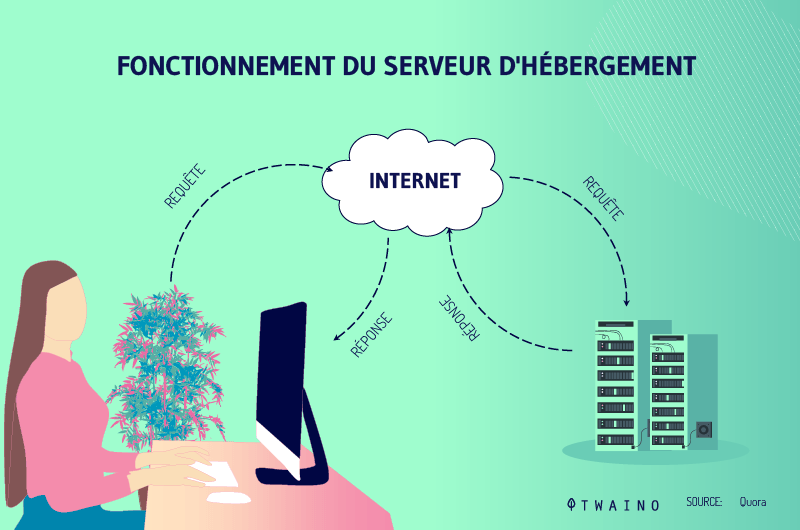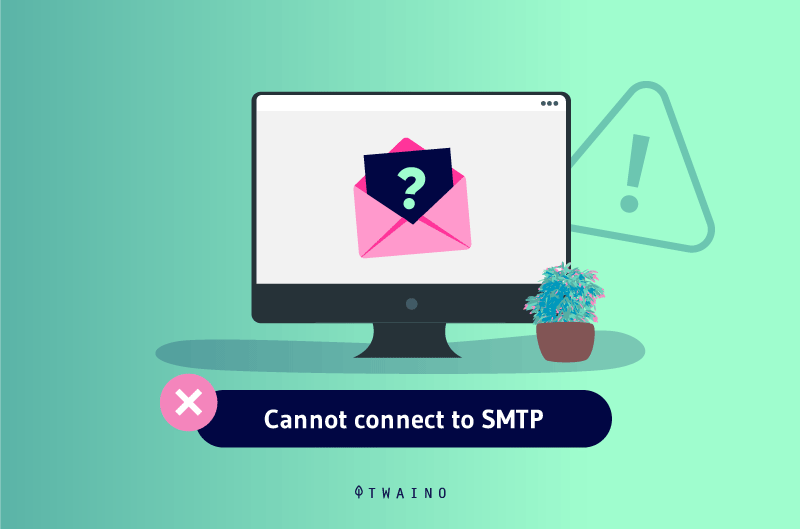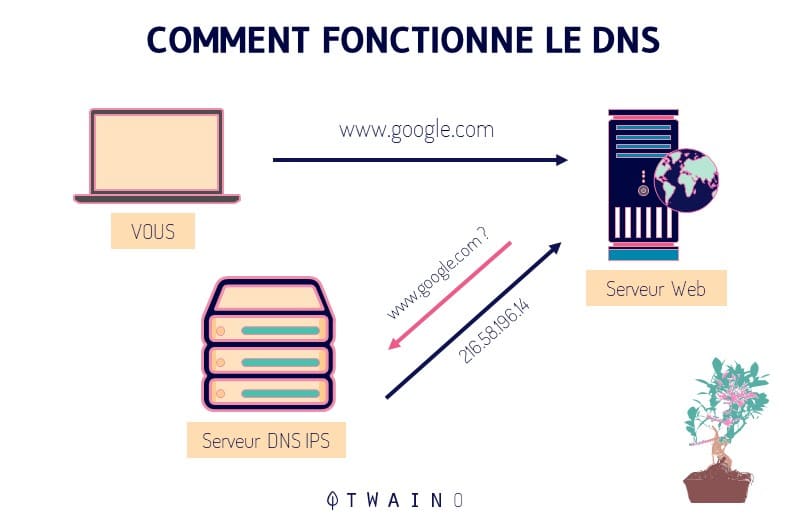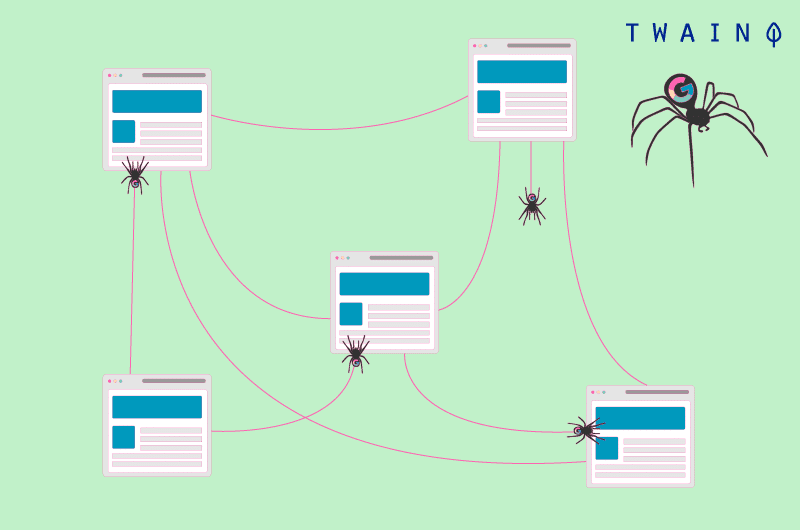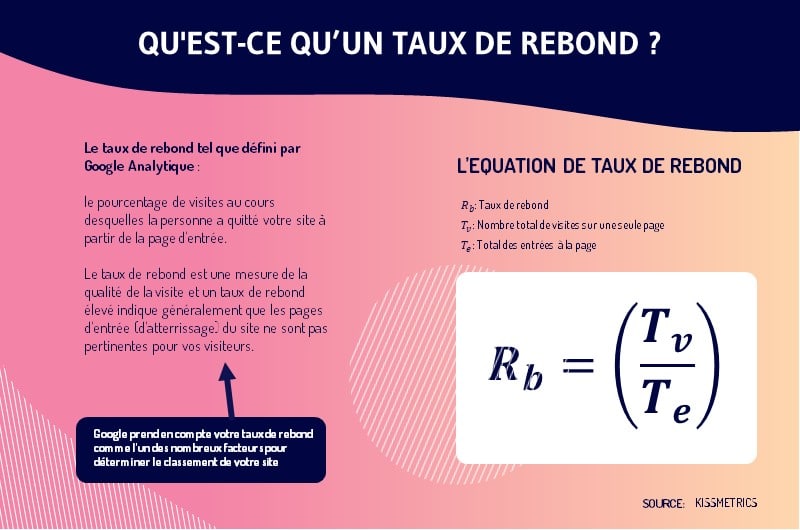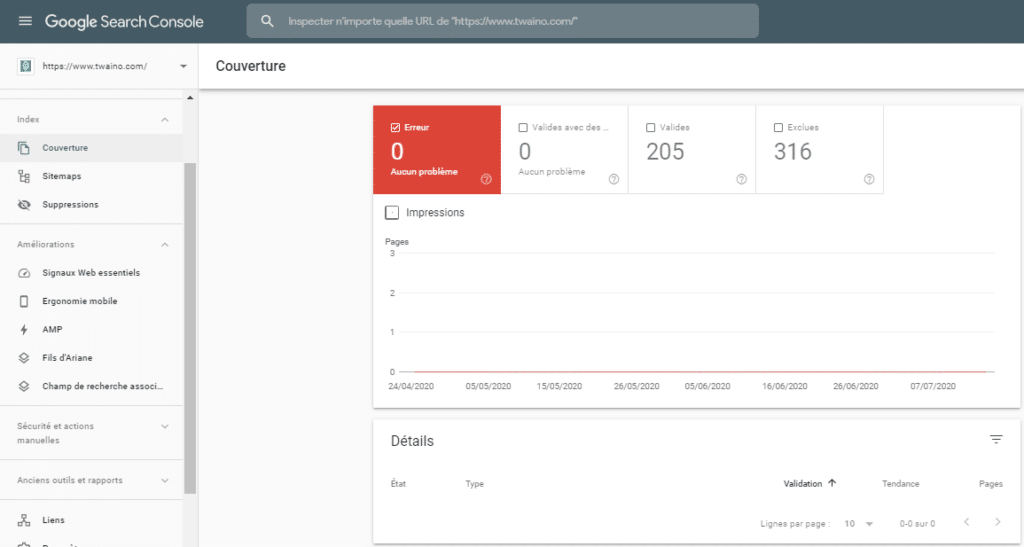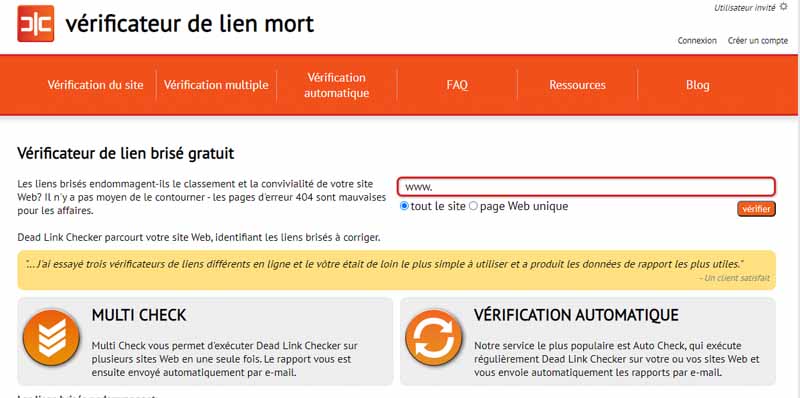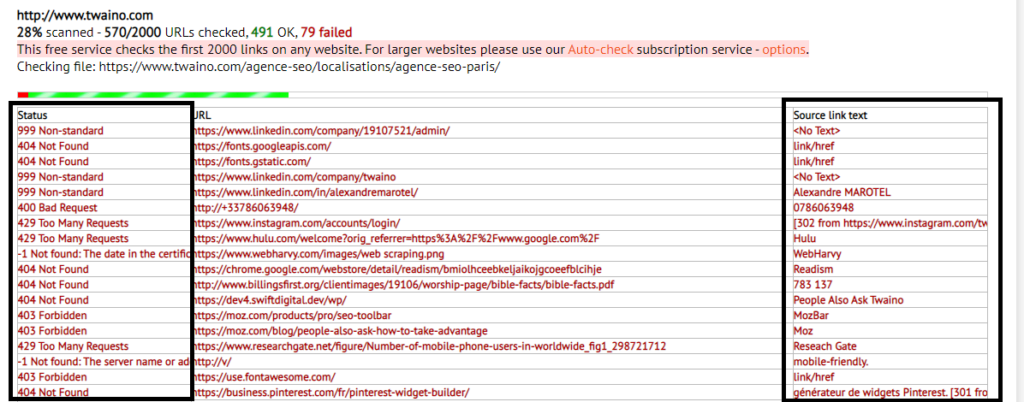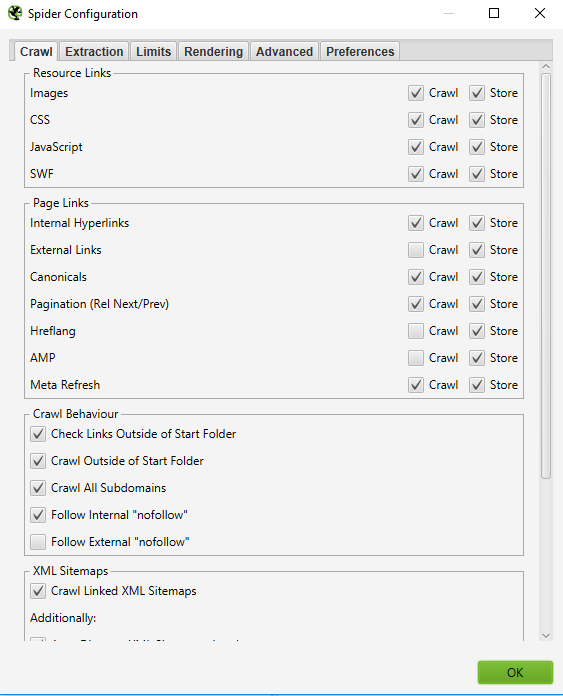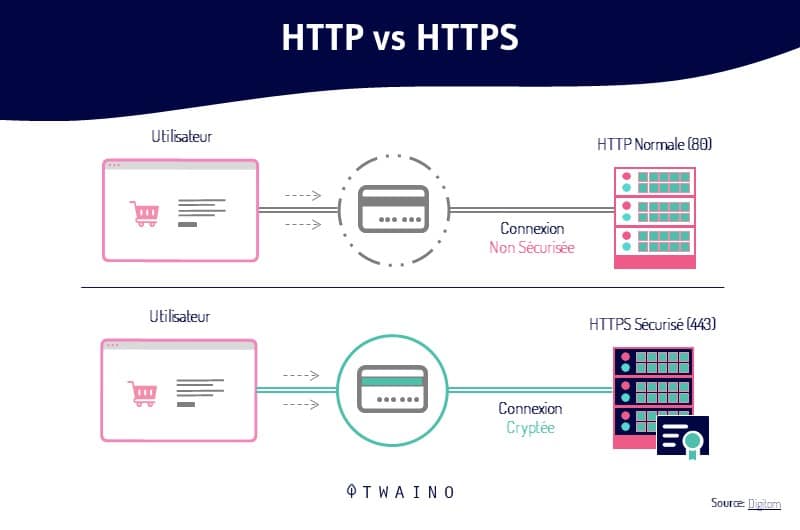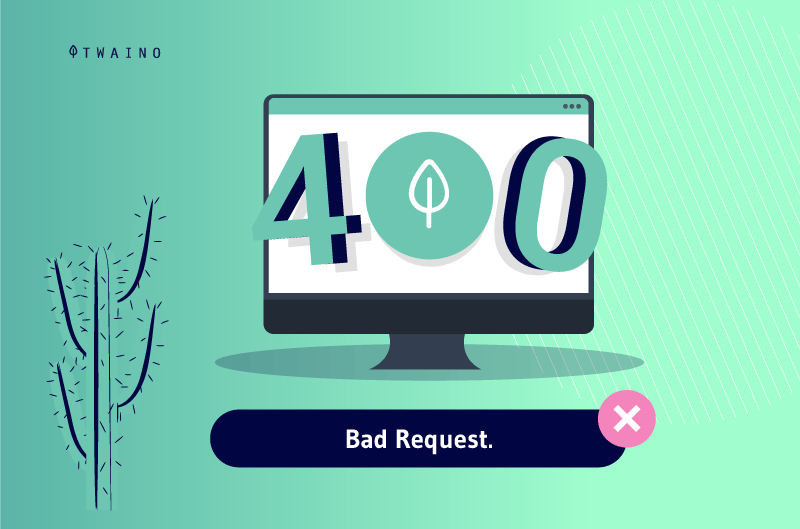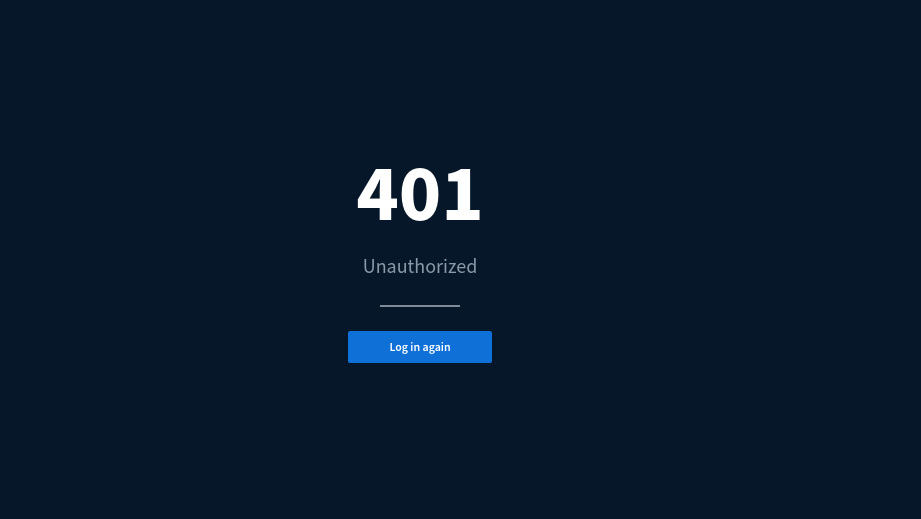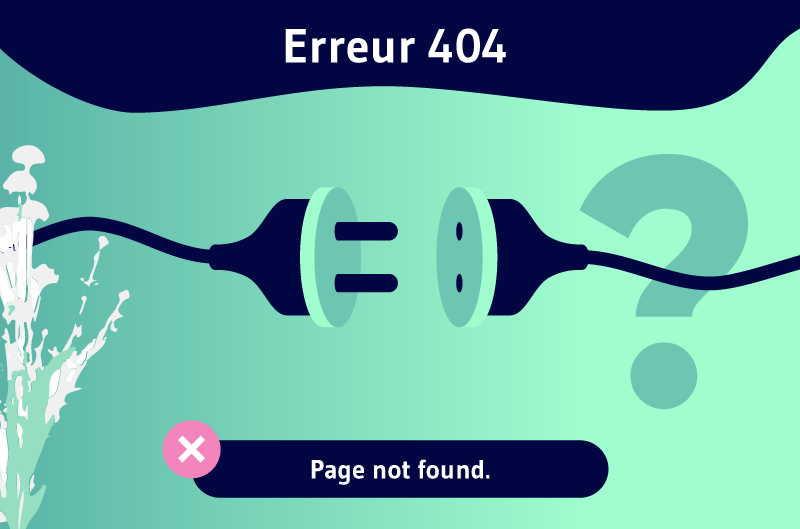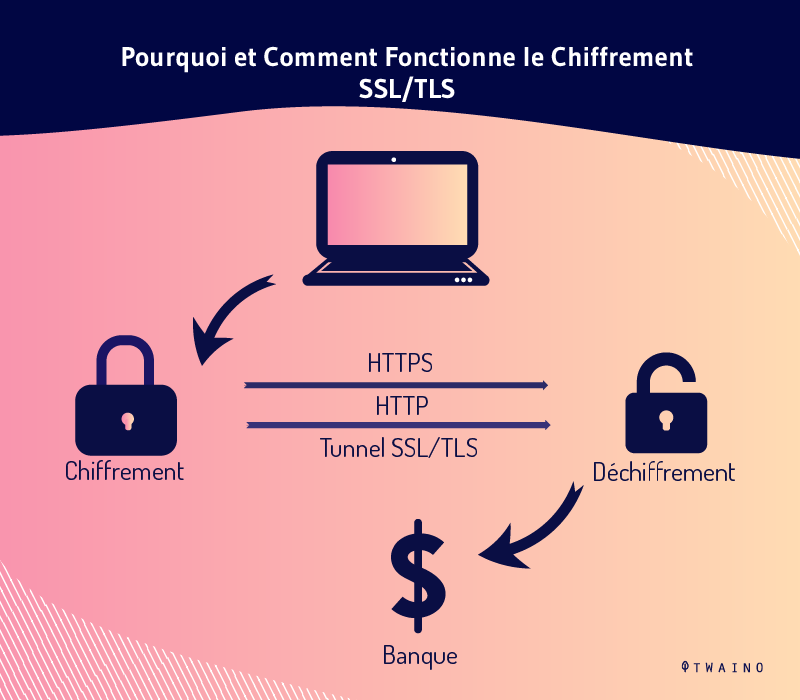HTTP response status code 421 Misdirected Request is returned by the server to indicate that it has received a request that was not intended for it. This status code was introduced in HTTP/2.
The response is cacheable by default. If the default behavior needs to be overridden then the response must include the appropriate HTTP caching headers.
Usage
When the 421 Misdirected Request error message is received, it indicates that the server is unable to produce a response. This status may be sent as a result of connection reuse, where the server does not want clients to reuse connections. In response, a client can try to resubmit the request over a different connection.
This may also occur when an alternative service (Alt-Svc) is selected.
This status will not be generated by proxies.
Note
Search engines like Google will not index a URL with 421 Misdirected Request response status, and consequently, URLs that have been indexed in the past but are now returning this HTTP status code will be removed from the search results.
Example
In the example, the client requests a resource and the server responds with the 421 Misdirected Request error message because it has received a request that was not intended for it.
Request
GET /tech-news HTTP/2
Host: www.example.ai
Response
HTTP/2 421 Misdirected Request
Code references
.NET
HttpStatusCode.MisdirectedRequest
Rust
http::StatusCode::MISDIRECTED_REQUEST
Rails
:misdirected_request
Go
http.StatusMisdirectedRequest
Symfony
Response::HTTP_MISDIRECTED_REQUEST
Python3.5+
http.HTTPStatus.MISDIRECTED_REQUEST
Apache HttpComponents Core
org.apache.hc.core5.http.HttpStatus.SC_MISDIRECTED_REQUEST
Angular
@angular/common/http/HttpStatusCode.MisdirectedRequest
Takeaway
The 421 Misdirected Request status code is a client error sent by a server that is unable to produce a response. The client may retry the request using another connection.
See also
- RFC 7838
- RFC 7540
Last updated: June 2, 2022
From Wikipedia, the free encyclopedia
This is a list of Hypertext Transfer Protocol (HTTP) response status codes. Status codes are issued by a server in response to a client’s request made to the server. It includes codes from IETF Request for Comments (RFCs), other specifications, and some additional codes used in some common applications of the HTTP. The first digit of the status code specifies one of five standard classes of responses. The optional message phrases shown are typical, but any human-readable alternative may be provided, or none at all.
Unless otherwise stated, the status code is part of the HTTP standard (RFC 9110).
The Internet Assigned Numbers Authority (IANA) maintains the official registry of HTTP status codes.[1]
All HTTP response status codes are separated into five classes or categories. The first digit of the status code defines the class of response, while the last two digits do not have any classifying or categorization role. There are five classes defined by the standard:
- 1xx informational response – the request was received, continuing process
- 2xx successful – the request was successfully received, understood, and accepted
- 3xx redirection – further action needs to be taken in order to complete the request
- 4xx client error – the request contains bad syntax or cannot be fulfilled
- 5xx server error – the server failed to fulfil an apparently valid request
1xx informational response
An informational response indicates that the request was received and understood. It is issued on a provisional basis while request processing continues. It alerts the client to wait for a final response. The message consists only of the status line and optional header fields, and is terminated by an empty line. As the HTTP/1.0 standard did not define any 1xx status codes, servers must not[note 1] send a 1xx response to an HTTP/1.0 compliant client except under experimental conditions.
- 100 Continue
- The server has received the request headers and the client should proceed to send the request body (in the case of a request for which a body needs to be sent; for example, a POST request). Sending a large request body to a server after a request has been rejected for inappropriate headers would be inefficient. To have a server check the request’s headers, a client must send
Expect: 100-continueas a header in its initial request and receive a100 Continuestatus code in response before sending the body. If the client receives an error code such as 403 (Forbidden) or 405 (Method Not Allowed) then it should not send the request’s body. The response417 Expectation Failedindicates that the request should be repeated without theExpectheader as it indicates that the server does not support expectations (this is the case, for example, of HTTP/1.0 servers).[2] - 101 Switching Protocols
- The requester has asked the server to switch protocols and the server has agreed to do so.
- 102 Processing (WebDAV; RFC 2518)
- A WebDAV request may contain many sub-requests involving file operations, requiring a long time to complete the request. This code indicates that the server has received and is processing the request, but no response is available yet. [3] This prevents the client from timing out and assuming the request was lost. The status code is deprecated.[4]
- 103 Early Hints (RFC 8297)
- Used to return some response headers before final HTTP message.[5]
2xx success
This class of status codes indicates the action requested by the client was received, understood, and accepted.[1]
- 200 OK
- Standard response for successful HTTP requests. The actual response will depend on the request method used. In a GET request, the response will contain an entity corresponding to the requested resource. In a POST request, the response will contain an entity describing or containing the result of the action.
- 201 Created
- The request has been fulfilled, resulting in the creation of a new resource.[6]
- 202 Accepted
- The request has been accepted for processing, but the processing has not been completed. The request might or might not be eventually acted upon, and may be disallowed when processing occurs.
- 203 Non-Authoritative Information (since HTTP/1.1)
- The server is a transforming proxy (e.g. a Web accelerator) that received a 200 OK from its origin, but is returning a modified version of the origin’s response.[7][8]
- 204 No Content
- The server successfully processed the request, and is not returning any content.
- 205 Reset Content
- The server successfully processed the request, asks that the requester reset its document view, and is not returning any content.
- 206 Partial Content
- The server is delivering only part of the resource (byte serving) due to a range header sent by the client. The range header is used by HTTP clients to enable resuming of interrupted downloads, or split a download into multiple simultaneous streams.
- 207 Multi-Status (WebDAV; RFC 4918)
- The message body that follows is by default an XML message and can contain a number of separate response codes, depending on how many sub-requests were made.[9]
- 208 Already Reported (WebDAV; RFC 5842)
- The members of a DAV binding have already been enumerated in a preceding part of the (multistatus) response, and are not being included again.
- 226 IM Used (RFC 3229)
- The server has fulfilled a request for the resource, and the response is a representation of the result of one or more instance-manipulations applied to the current instance.[10]
3xx redirection
This class of status code indicates the client must take additional action to complete the request. Many of these status codes are used in URL redirection.[1]
A user agent may carry out the additional action with no user interaction only if the method used in the second request is GET or HEAD. A user agent may automatically redirect a request. A user agent should detect and intervene to prevent cyclical redirects.[11]
- 300 Multiple Choices
- Indicates multiple options for the resource from which the client may choose (via agent-driven content negotiation). For example, this code could be used to present multiple video format options, to list files with different filename extensions, or to suggest word-sense disambiguation.
- 301 Moved Permanently
- This and all future requests should be directed to the given URI.
- 302 Found (Previously «Moved temporarily»)
- Tells the client to look at (browse to) another URL. The HTTP/1.0 specification (RFC 1945) required the client to perform a temporary redirect with the same method (the original describing phrase was «Moved Temporarily»),[12] but popular browsers implemented 302 redirects by changing the method to GET. Therefore, HTTP/1.1 added status codes 303 and 307 to distinguish between the two behaviours.[11]
- 303 See Other (since HTTP/1.1)
- The response to the request can be found under another URI using the GET method. When received in response to a POST (or PUT/DELETE), the client should presume that the server has received the data and should issue a new GET request to the given URI.
- 304 Not Modified
- Indicates that the resource has not been modified since the version specified by the request headers If-Modified-Since or If-None-Match. In such case, there is no need to retransmit the resource since the client still has a previously-downloaded copy.
- 305 Use Proxy (since HTTP/1.1)
- The requested resource is available only through a proxy, the address for which is provided in the response. For security reasons, many HTTP clients (such as Mozilla Firefox and Internet Explorer) do not obey this status code.
- 306 Switch Proxy
- No longer used. Originally meant «Subsequent requests should use the specified proxy.»
- 307 Temporary Redirect (since HTTP/1.1)
- In this case, the request should be repeated with another URI; however, future requests should still use the original URI. In contrast to how 302 was historically implemented, the request method is not allowed to be changed when reissuing the original request. For example, a POST request should be repeated using another POST request.
- 308 Permanent Redirect
- This and all future requests should be directed to the given URI. 308 parallel the behaviour of 301, but does not allow the HTTP method to change. So, for example, submitting a form to a permanently redirected resource may continue smoothly.
4xx client errors
This class of status code is intended for situations in which the error seems to have been caused by the client. Except when responding to a HEAD request, the server should include an entity containing an explanation of the error situation, and whether it is a temporary or permanent condition. These status codes are applicable to any request method. User agents should display any included entity to the user.
- 400 Bad Request
- The server cannot or will not process the request due to an apparent client error (e.g., malformed request syntax, size too large, invalid request message framing, or deceptive request routing).
- 401 Unauthorized
- Similar to 403 Forbidden, but specifically for use when authentication is required and has failed or has not yet been provided. The response must include a WWW-Authenticate header field containing a challenge applicable to the requested resource. See Basic access authentication and Digest access authentication. 401 semantically means «unauthorised», the user does not have valid authentication credentials for the target resource.
- Some sites incorrectly issue HTTP 401 when an IP address is banned from the website (usually the website domain) and that specific address is refused permission to access a website.[citation needed]
- 402 Payment Required
- Reserved for future use. The original intention was that this code might be used as part of some form of digital cash or micropayment scheme, as proposed, for example, by GNU Taler,[14] but that has not yet happened, and this code is not widely used. Google Developers API uses this status if a particular developer has exceeded the daily limit on requests.[15] Sipgate uses this code if an account does not have sufficient funds to start a call.[16] Shopify uses this code when the store has not paid their fees and is temporarily disabled.[17] Stripe uses this code for failed payments where parameters were correct, for example blocked fraudulent payments.[18]
- 403 Forbidden
- The request contained valid data and was understood by the server, but the server is refusing action. This may be due to the user not having the necessary permissions for a resource or needing an account of some sort, or attempting a prohibited action (e.g. creating a duplicate record where only one is allowed). This code is also typically used if the request provided authentication by answering the WWW-Authenticate header field challenge, but the server did not accept that authentication. The request should not be repeated.
- 404 Not Found
- The requested resource could not be found but may be available in the future. Subsequent requests by the client are permissible.
- 405 Method Not Allowed
- A request method is not supported for the requested resource; for example, a GET request on a form that requires data to be presented via POST, or a PUT request on a read-only resource.
- 406 Not Acceptable
- The requested resource is capable of generating only content not acceptable according to the Accept headers sent in the request. See Content negotiation.
- 407 Proxy Authentication Required
- The client must first authenticate itself with the proxy.
- 408 Request Timeout
- The server timed out waiting for the request. According to HTTP specifications: «The client did not produce a request within the time that the server was prepared to wait. The client MAY repeat the request without modifications at any later time.»
- 409 Conflict
- Indicates that the request could not be processed because of conflict in the current state of the resource, such as an edit conflict between multiple simultaneous updates.
- 410 Gone
- Indicates that the resource requested was previously in use but is no longer available and will not be available again. This should be used when a resource has been intentionally removed and the resource should be purged. Upon receiving a 410 status code, the client should not request the resource in the future. Clients such as search engines should remove the resource from their indices. Most use cases do not require clients and search engines to purge the resource, and a «404 Not Found» may be used instead.
- 411 Length Required
- The request did not specify the length of its content, which is required by the requested resource.
- 412 Precondition Failed
- The server does not meet one of the preconditions that the requester put on the request header fields.
- 413 Payload Too Large
- The request is larger than the server is willing or able to process. Previously called «Request Entity Too Large» in RFC 2616.[19]
- 414 URI Too Long
- The URI provided was too long for the server to process. Often the result of too much data being encoded as a query-string of a GET request, in which case it should be converted to a POST request. Called «Request-URI Too Long» previously in RFC 2616.[20]
- 415 Unsupported Media Type
- The request entity has a media type which the server or resource does not support. For example, the client uploads an image as image/svg+xml, but the server requires that images use a different format.
- 416 Range Not Satisfiable
- The client has asked for a portion of the file (byte serving), but the server cannot supply that portion. For example, if the client asked for a part of the file that lies beyond the end of the file. Called «Requested Range Not Satisfiable» previously RFC 2616.[21]
- 417 Expectation Failed
- The server cannot meet the requirements of the Expect request-header field.[22]
- 418 I’m a teapot (RFC 2324, RFC 7168)
- This code was defined in 1998 as one of the traditional IETF April Fools’ jokes, in RFC 2324, Hyper Text Coffee Pot Control Protocol, and is not expected to be implemented by actual HTTP servers. The RFC specifies this code should be returned by teapots requested to brew coffee.[23] This HTTP status is used as an Easter egg in some websites, such as Google.com’s «I’m a teapot» easter egg.[24][25][26] Sometimes, this status code is also used as a response to a blocked request, instead of the more appropriate 403 Forbidden.[27][28]
- 421 Misdirected Request
- The request was directed at a server that is not able to produce a response (for example because of connection reuse).
- 422 Unprocessable Entity
- The request was well-formed but was unable to be followed due to semantic errors.[9]
- 423 Locked (WebDAV; RFC 4918)
- The resource that is being accessed is locked.[9]
- 424 Failed Dependency (WebDAV; RFC 4918)
- The request failed because it depended on another request and that request failed (e.g., a PROPPATCH).[9]
- 425 Too Early (RFC 8470)
- Indicates that the server is unwilling to risk processing a request that might be replayed.
- 426 Upgrade Required
- The client should switch to a different protocol such as TLS/1.3, given in the Upgrade header field.
- 428 Precondition Required (RFC 6585)
- The origin server requires the request to be conditional. Intended to prevent the ‘lost update’ problem, where a client GETs a resource’s state, modifies it, and PUTs it back to the server, when meanwhile a third party has modified the state on the server, leading to a conflict.[29]
- 429 Too Many Requests (RFC 6585)
- The user has sent too many requests in a given amount of time. Intended for use with rate-limiting schemes.[29]
- 431 Request Header Fields Too Large (RFC 6585)
- The server is unwilling to process the request because either an individual header field, or all the header fields collectively, are too large.[29]
- 451 Unavailable For Legal Reasons (RFC 7725)
- A server operator has received a legal demand to deny access to a resource or to a set of resources that includes the requested resource.[30] The code 451 was chosen as a reference to the novel Fahrenheit 451 (see the Acknowledgements in the RFC).
5xx server errors
The server failed to fulfil a request.
Response status codes beginning with the digit «5» indicate cases in which the server is aware that it has encountered an error or is otherwise incapable of performing the request. Except when responding to a HEAD request, the server should include an entity containing an explanation of the error situation, and indicate whether it is a temporary or permanent condition. Likewise, user agents should display any included entity to the user. These response codes are applicable to any request method.
- 500 Internal Server Error
- A generic error message, given when an unexpected condition was encountered and no more specific message is suitable.
- 501 Not Implemented
- The server either does not recognize the request method, or it lacks the ability to fulfil the request. Usually this implies future availability (e.g., a new feature of a web-service API).
- 502 Bad Gateway
- The server was acting as a gateway or proxy and received an invalid response from the upstream server.
- 503 Service Unavailable
- The server cannot handle the request (because it is overloaded or down for maintenance). Generally, this is a temporary state.[31]
- 504 Gateway Timeout
- The server was acting as a gateway or proxy and did not receive a timely response from the upstream server.
- 505 HTTP Version Not Supported
- The server does not support the HTTP version used in the request.
- 506 Variant Also Negotiates (RFC 2295)
- Transparent content negotiation for the request results in a circular reference.[32]
- 507 Insufficient Storage (WebDAV; RFC 4918)
- The server is unable to store the representation needed to complete the request.[9]
- 508 Loop Detected (WebDAV; RFC 5842)
- The server detected an infinite loop while processing the request (sent instead of 208 Already Reported).
- 510 Not Extended (RFC 2774)
- Further extensions to the request are required for the server to fulfil it.[33]
- 511 Network Authentication Required (RFC 6585)
- The client needs to authenticate to gain network access. Intended for use by intercepting proxies used to control access to the network (e.g., «captive portals» used to require agreement to Terms of Service before granting full Internet access via a Wi-Fi hotspot).[29]
Unofficial codes
The following codes are not specified by any standard.
- 419 Page Expired (Laravel Framework)
- Used by the Laravel Framework when a CSRF Token is missing or expired.
- 420 Method Failure (Spring Framework)
- A deprecated response used by the Spring Framework when a method has failed.[34]
- 420 Enhance Your Calm (Twitter)
- Returned by version 1 of the Twitter Search and Trends API when the client is being rate limited; versions 1.1 and later use the 429 Too Many Requests response code instead.[35] The phrase «Enhance your calm» comes from the 1993 movie Demolition Man, and its association with this number is likely a reference to cannabis.[citation needed]
- 430 Request Header Fields Too Large (Shopify)
- Used by Shopify, instead of the 429 Too Many Requests response code, when too many URLs are requested within a certain time frame.[36]
- 450 Blocked by Windows Parental Controls (Microsoft)
- The Microsoft extension code indicated when Windows Parental Controls are turned on and are blocking access to the requested webpage.[37]
- 498 Invalid Token (Esri)
- Returned by ArcGIS for Server. Code 498 indicates an expired or otherwise invalid token.[38]
- 499 Token Required (Esri)
- Returned by ArcGIS for Server. Code 499 indicates that a token is required but was not submitted.[38]
- 509 Bandwidth Limit Exceeded (Apache Web Server/cPanel)
- The server has exceeded the bandwidth specified by the server administrator; this is often used by shared hosting providers to limit the bandwidth of customers.[39]
- 529 Site is overloaded
- Used by Qualys in the SSLLabs server testing API to signal that the site can’t process the request.[40]
- 530 Site is frozen
- Used by the Pantheon Systems web platform to indicate a site that has been frozen due to inactivity.[41]
- 598 (Informal convention) Network read timeout error
- Used by some HTTP proxies to signal a network read timeout behind the proxy to a client in front of the proxy.[42]
- 599 Network Connect Timeout Error
- An error used by some HTTP proxies to signal a network connect timeout behind the proxy to a client in front of the proxy.
Internet Information Services
Microsoft’s Internet Information Services (IIS) web server expands the 4xx error space to signal errors with the client’s request.
- 440 Login Time-out
- The client’s session has expired and must log in again.[43]
- 449 Retry With
- The server cannot honour the request because the user has not provided the required information.[44]
- 451 Redirect
- Used in Exchange ActiveSync when either a more efficient server is available or the server cannot access the users’ mailbox.[45] The client is expected to re-run the HTTP AutoDiscover operation to find a more appropriate server.[46]
IIS sometimes uses additional decimal sub-codes for more specific information,[47] however these sub-codes only appear in the response payload and in documentation, not in the place of an actual HTTP status code.
nginx
The nginx web server software expands the 4xx error space to signal issues with the client’s request.[48][49]
- 444 No Response
- Used internally[50] to instruct the server to return no information to the client and close the connection immediately.
- 494 Request header too large
- Client sent too large request or too long header line.
- 495 SSL Certificate Error
- An expansion of the 400 Bad Request response code, used when the client has provided an invalid client certificate.
- 496 SSL Certificate Required
- An expansion of the 400 Bad Request response code, used when a client certificate is required but not provided.
- 497 HTTP Request Sent to HTTPS Port
- An expansion of the 400 Bad Request response code, used when the client has made a HTTP request to a port listening for HTTPS requests.
- 499 Client Closed Request
- Used when the client has closed the request before the server could send a response.
Cloudflare
Cloudflare’s reverse proxy service expands the 5xx series of errors space to signal issues with the origin server.[51]
- 520 Web Server Returned an Unknown Error
- The origin server returned an empty, unknown, or unexpected response to Cloudflare.[52]
- 521 Web Server Is Down
- The origin server refused connections from Cloudflare. Security solutions at the origin may be blocking legitimate connections from certain Cloudflare IP addresses.
- 522 Connection Timed Out
- Cloudflare timed out contacting the origin server.
- 523 Origin Is Unreachable
- Cloudflare could not reach the origin server; for example, if the DNS records for the origin server are incorrect or missing.
- 524 A Timeout Occurred
- Cloudflare was able to complete a TCP connection to the origin server, but did not receive a timely HTTP response.
- 525 SSL Handshake Failed
- Cloudflare could not negotiate a SSL/TLS handshake with the origin server.
- 526 Invalid SSL Certificate
- Cloudflare could not validate the SSL certificate on the origin web server. Also used by Cloud Foundry’s gorouter.
- 527 Railgun Error
- Error 527 indicates an interrupted connection between Cloudflare and the origin server’s Railgun server.[53]
- 530
- Error 530 is returned along with a 1xxx error.[54]
AWS Elastic Load Balancer
Amazon’s Elastic Load Balancing adds a few custom return codes
- 460
- Client closed the connection with the load balancer before the idle timeout period elapsed. Typically when client timeout is sooner than the Elastic Load Balancer’s timeout.[55]
- 463
- The load balancer received an X-Forwarded-For request header with more than 30 IP addresses.[55]
- 464
- Incompatible protocol versions between Client and Origin server.[55]
- 561 Unauthorized
- An error around authentication returned by a server registered with a load balancer. You configured a listener rule to authenticate users, but the identity provider (IdP) returned an error code when authenticating the user.[55]
Caching warning codes (obsoleted)
The following caching related warning codes were specified under RFC 7234. Unlike the other status codes above, these were not sent as the response status in the HTTP protocol, but as part of the «Warning» HTTP header.[56][57]
Since this «Warning» header is often neither sent by servers nor acknowledged by clients, this header and its codes were obsoleted by the HTTP Working Group in 2022 with RFC 9111.[58]
- 110 Response is Stale
- The response provided by a cache is stale (the content’s age exceeds a maximum age set by a Cache-Control header or heuristically chosen lifetime).
- 111 Revalidation Failed
- The cache was unable to validate the response, due to an inability to reach the origin server.
- 112 Disconnected Operation
- The cache is intentionally disconnected from the rest of the network.
- 113 Heuristic Expiration
- The cache heuristically chose a freshness lifetime greater than 24 hours and the response’s age is greater than 24 hours.
- 199 Miscellaneous Warning
- Arbitrary, non-specific warning. The warning text may be logged or presented to the user.
- 214 Transformation Applied
- Added by a proxy if it applies any transformation to the representation, such as changing the content encoding, media type or the like.
- 299 Miscellaneous Persistent Warning
- Same as 199, but indicating a persistent warning.
See also
- Custom error pages
- List of FTP server return codes
- List of HTTP header fields
- List of SMTP server return codes
- Common Log Format
Explanatory notes
- ^ Emphasised words and phrases such as must and should represent interpretation guidelines as given by RFC 2119
References
- ^ a b c «Hypertext Transfer Protocol (HTTP) Status Code Registry». Iana.org. Archived from the original on December 11, 2011. Retrieved January 8, 2015.
- ^ Fielding, Roy T. «RFC 9110: HTTP Semantics and Content, Section 10.1.1 «Expect»«.
- ^ Goland, Yaronn; Whitehead, Jim; Faizi, Asad; Carter, Steve R.; Jensen, Del (February 1999). HTTP Extensions for Distributed Authoring – WEBDAV. IETF. doi:10.17487/RFC2518. RFC 2518. Retrieved October 24, 2009.
- ^ «102 Processing — HTTP MDN». 102 status code is deprecated
- ^ Oku, Kazuho (December 2017). An HTTP Status Code for Indicating Hints. IETF. doi:10.17487/RFC8297. RFC 8297. Retrieved December 20, 2017.
- ^ Stewart, Mark; djna. «Create request with POST, which response codes 200 or 201 and content». Stack Overflow. Archived from the original on October 11, 2016. Retrieved October 16, 2015.
- ^ «RFC 9110: HTTP Semantics and Content, Section 15.3.4».
- ^ «RFC 9110: HTTP Semantics and Content, Section 7.7».
- ^ a b c d e Dusseault, Lisa, ed. (June 2007). HTTP Extensions for Web Distributed Authoring and Versioning (WebDAV). IETF. doi:10.17487/RFC4918. RFC 4918. Retrieved October 24, 2009.
- ^ Delta encoding in HTTP. IETF. January 2002. doi:10.17487/RFC3229. RFC 3229. Retrieved February 25, 2011.
- ^ a b «RFC 9110: HTTP Semantics and Content, Section 15.4 «Redirection 3xx»«.
- ^ Berners-Lee, Tim; Fielding, Roy T.; Nielsen, Henrik Frystyk (May 1996). Hypertext Transfer Protocol – HTTP/1.0. IETF. doi:10.17487/RFC1945. RFC 1945. Retrieved October 24, 2009.
- ^ «The GNU Taler tutorial for PHP Web shop developers 0.4.0». docs.taler.net. Archived from the original on November 8, 2017. Retrieved October 29, 2017.
- ^ «Google API Standard Error Responses». 2016. Archived from the original on May 25, 2017. Retrieved June 21, 2017.
- ^ «Sipgate API Documentation». Archived from the original on July 10, 2018. Retrieved July 10, 2018.
- ^ «Shopify Documentation». Archived from the original on July 25, 2018. Retrieved July 25, 2018.
- ^ «Stripe API Reference – Errors». stripe.com. Retrieved October 28, 2019.
- ^ «RFC2616 on status 413». Tools.ietf.org. Archived from the original on March 7, 2011. Retrieved November 11, 2015.
- ^ «RFC2616 on status 414». Tools.ietf.org. Archived from the original on March 7, 2011. Retrieved November 11, 2015.
- ^ «RFC2616 on status 416». Tools.ietf.org. Archived from the original on March 7, 2011. Retrieved November 11, 2015.
- ^ TheDeadLike. «HTTP/1.1 Status Codes 400 and 417, cannot choose which». serverFault. Archived from the original on October 10, 2015. Retrieved October 16, 2015.
- ^ Larry Masinter (April 1, 1998). Hyper Text Coffee Pot Control Protocol (HTCPCP/1.0). doi:10.17487/RFC2324. RFC 2324.
Any attempt to brew coffee with a teapot should result in the error code «418 I’m a teapot». The resulting entity body MAY be short and stout.
- ^ I’m a teapot
- ^ Barry Schwartz (August 26, 2014). «New Google Easter Egg For SEO Geeks: Server Status 418, I’m A Teapot». Search Engine Land. Archived from the original on November 15, 2015. Retrieved November 4, 2015.
- ^ «Google’s Teapot». Retrieved October 23, 2017.[dead link]
- ^ «Enable extra web security on a website». DreamHost. Retrieved December 18, 2022.
- ^ «I Went to a Russian Website and All I Got Was This Lousy Teapot». PCMag. Retrieved December 18, 2022.
- ^ a b c d Nottingham, M.; Fielding, R. (April 2012). «RFC 6585 – Additional HTTP Status Codes». Request for Comments. Internet Engineering Task Force. Archived from the original on May 4, 2012. Retrieved May 1, 2012.
- ^ Bray, T. (February 2016). «An HTTP Status Code to Report Legal Obstacles». ietf.org. Archived from the original on March 4, 2016. Retrieved March 7, 2015.
- ^ alex. «What is the correct HTTP status code to send when a site is down for maintenance?». Stack Overflow. Archived from the original on October 11, 2016. Retrieved October 16, 2015.
- ^ Holtman, Koen; Mutz, Andrew H. (March 1998). Transparent Content Negotiation in HTTP. IETF. doi:10.17487/RFC2295. RFC 2295. Retrieved October 24, 2009.
- ^ Nielsen, Henrik Frystyk; Leach, Paul; Lawrence, Scott (February 2000). An HTTP Extension Framework. IETF. doi:10.17487/RFC2774. RFC 2774. Retrieved October 24, 2009.
- ^ «Enum HttpStatus». Spring Framework. org.springframework.http. Archived from the original on October 25, 2015. Retrieved October 16, 2015.
- ^ «Twitter Error Codes & Responses». Twitter. 2014. Archived from the original on September 27, 2017. Retrieved January 20, 2014.
- ^ «HTTP Status Codes and SEO: what you need to know». ContentKing. Retrieved August 9, 2019.
- ^ «Screenshot of error page». Archived from the original (bmp) on May 11, 2013. Retrieved October 11, 2009.
- ^ a b «Using token-based authentication». ArcGIS Server SOAP SDK. Archived from the original on September 26, 2014. Retrieved September 8, 2014.
- ^ «HTTP Error Codes and Quick Fixes». Docs.cpanel.net. Archived from the original on November 23, 2015. Retrieved October 15, 2015.
- ^ «SSL Labs API v3 Documentation». github.com.
- ^ «Platform Considerations | Pantheon Docs». pantheon.io. Archived from the original on January 6, 2017. Retrieved January 5, 2017.
- ^ «HTTP status codes — ascii-code.com». www.ascii-code.com. Archived from the original on January 7, 2017. Retrieved December 23, 2016.
- ^
«Error message when you try to log on to Exchange 2007 by using Outlook Web Access: «440 Login Time-out»«. Microsoft. 2010. Retrieved November 13, 2013. - ^ «2.2.6 449 Retry With Status Code». Microsoft. 2009. Archived from the original on October 5, 2009. Retrieved October 26, 2009.
- ^ «MS-ASCMD, Section 3.1.5.2.2». Msdn.microsoft.com. Archived from the original on March 26, 2015. Retrieved January 8, 2015.
- ^ «Ms-oxdisco». Msdn.microsoft.com. Archived from the original on July 31, 2014. Retrieved January 8, 2015.
- ^ «The HTTP status codes in IIS 7.0». Microsoft. July 14, 2009. Archived from the original on April 9, 2009. Retrieved April 1, 2009.
- ^ «ngx_http_request.h». nginx 1.9.5 source code. nginx inc. Archived from the original on September 19, 2017. Retrieved January 9, 2016.
- ^ «ngx_http_special_response.c». nginx 1.9.5 source code. nginx inc. Archived from the original on May 8, 2018. Retrieved January 9, 2016.
- ^ «return» directive Archived March 1, 2018, at the Wayback Machine (http_rewrite module) documentation.
- ^ «Troubleshooting: Error Pages». Cloudflare. Archived from the original on March 4, 2016. Retrieved January 9, 2016.
- ^ «Error 520: web server returns an unknown error». Cloudflare.
- ^ «527 Error: Railgun Listener to origin error». Cloudflare. Archived from the original on October 13, 2016. Retrieved October 12, 2016.
- ^ «Error 530». Cloudflare. Retrieved November 1, 2019.
- ^ a b c d «Troubleshoot Your Application Load Balancers – Elastic Load Balancing». docs.aws.amazon.com. Retrieved May 17, 2023.
- ^ «Hypertext Transfer Protocol (HTTP/1.1): Caching». datatracker.ietf.org. Retrieved September 25, 2021.
- ^ «Warning — HTTP | MDN». developer.mozilla.org. Retrieved August 15, 2021.
Some text was copied from this source, which is available under a Creative Commons Attribution-ShareAlike 2.5 Generic (CC BY-SA 2.5) license.
- ^ «RFC 9111: HTTP Caching, Section 5.5 «Warning»«. June 2022.
External links
- «RFC 9110: HTTP Semantics and Content, Section 15 «Status Codes»«.
- Hypertext Transfer Protocol (HTTP) Status Code Registry at the Internet Assigned Numbers Authority
- MDN status code reference at mozilla.org
I occasionally get the following 421 error:
Misdirected Request
The client needs a new connection for this request as the requested
host name does not match the Server Name Indication (SNI) in use for
this connection.
However, refreshing the browser clears the error and the page loads normally. The next time loading the page will not produce and error and as such the pattern seems pretty random. The only pattern I can see is that this may happen When I am redirecting a page using header(«Location: » . $url);
I have a PositiveSSL Multi-Domain Certificate from Comodo. My servers are Apache on a shared web hosting service so I don’t have access to the configuration.
I load pages from one domain and within the page are links to a second domain on the certificate.
Everything I’ve read regarding this error seems to point to this problem being related to this being a multi-domain certificate.
What I would like to know is if there is anything on the web page (php) coding side of things that can cause this (and can be fixed) or if it is a configuration error or possibly a server error and only my hosting service can fix it.
My hosting service has so far been unable to provide anything and requested calling back with the exact time it happens next so they can research it. Any help would be appreciated as I am not overly confident they can figure this out.
UPDATE
Ok, almost a couple of years later and decided it was time to deal with it. I was able to get most of the problems resolved by removing my static domains which served images and javascript. However, I was still using a second domain for some of this content and Safari in particular was still giving me problems.
I did more research and came across another article that talks about it here. Exactly what @Kevin describes. The article confirmed that it happens in Safari. So taking the advice, I set about getting separate certificates for each domain. I am on a shared host (Webhostinghub) and discovered they now offer free SSL (AutoSSL) that auto renews. It sounded to good to be true. They set me up with 5 free certificates. So far so good. I may even try to re-enable the static domains to test. If this all works, I’ll save $ to boot as a bonus and let my Comodo certificates expire in July.
The request was directed at a server that is not able to produce a response. This can be sent by a server that is not configured to produce responses for the combination of scheme and authority that are included in the request URI.
Clients receiving a 421 Misdirected Request response from a server MAY retry the request — whether the request method is idempotent or not — over a different connection. This is possible if a connection is reused1 or if an alternative service is selected ALT-SVC.
This status code MUST NOT be generated by proxies.
A 421 response is cacheable by default, i.e., unless otherwise indicated by the method definition or explicit cache controls2.
- 1 Connection Reuse RFC7540 Section 9.1.1
- 2 Calculating Heuristic Freshness RFC7234 Section 4.2.2
- Source: RFC7540 Section 9.1.2
421 CODE REFERENCES
Rails HTTP Status Symbol :misdirected_request
.NET HttpStatusCode.MisdirectedRequest
Rust http::StatusCode::MISDIRECTED_REQUEST
Go http.StatusMisdirectedRequest
Symfony Response::HTTP_MISDIRECTED_REQUEST
Python3.5+ http.HTTPStatus.MISDIRECTED_REQUEST
Apache HttpComponents Core org.apache.hc.core5.http.HttpStatus.SC_MISDIRECTED_REQUEST
Angular @angular/common/http/HttpStatusCode.MisdirectedRequest
How to troubleshoot a 421 status code
If you encounter a 421 status code, it is recommended to check the documentation or seek support from the application or server vendor for more information about the specific cause of the status code. In addition, you can try the following general troubleshooting steps:
- Check the server logs: Look for any errors or warnings in the server logs that may provide more information about the cause of the status code.
- Verify network connectivity: Ensure that there are no network connectivity issues between the client and server that may be causing the status code.
- Verify credentials: If the 421 status code is related to authentication, verify that the client is using the correct credentials to access the resource.
- Check server configuration: Review the server configuration to ensure that it is set up correctly and that all necessary dependencies are installed and configured.
- Check for updates: Make sure that the application or server is running the latest version and that any necessary updates or patches have been applied.
Additional resources
- Learn about web development
- Learn about SEO
- Web development services from WebFX
- SEO services from WebFX
- MDN Web Docs
- W3Schools
Return to List of HTTP Status Codes
The 421 error or “HTTP 421 error” is a status code in the HTTP protocol that means that a request has been routed to a server that is not capable of responding. This error occurs when the server is not programmed to produce responses for the combination of schemas and authority included in the request URL.
Competitors are just a click away on the internet and web entrepreneurs must be committed to continuous improvement of the user experience.
Statistically speaking, 88% of online consumers are less likely to return to a website after a bad experience. This figure shows the need to detect problems on a website in time to make appropriate corrections.
Common errors on a website are related to URLs and often appear when visitors click on a link to view something they find interesting or to purchase a product.
This is the case with the 421 error where the server sends back to the user the message that the request is misdirected. This situation can prevent a website from attracting new prospects and customers.
Through this article, we discover what the 421 error is and how it can affect a site in terms of SEO.
We will then go over the tools that can detect 421 errors on a site and the different techniques to fix these errors. Finally, we will explore the common questions in relation to the 421 error.
Chapter 1: How to understand the 421 error and how does it affect a website?
All websites encounter problems at some point. But the frequency of these problems can have undesirable effects for sites. This chapter presents,
- The definition of the 421 error;
- The causes of the 421 error;
- The impact of the 421 error on a web site.
1.1) What is the 421 error?
All activities on the Internet are the result of the interaction between browsers and servers. When Internet users try to access a website, browsers send a request to the website’s server.
The server responds to the user’s request with an HTTP status code, a three-digit code like 421. Status codes are a kind of conversation on the web between browsers and servers.
They constitute a message and indicate whether everything is going well between the browser and the website or not. Understanding these codes will allow you to know if everything is going as planned on your site and to quickly diagnose the type of error.
This is crucial to minimize downtime on your site when problems occur. The HTTP status codes fall into five groups and each group indicates a different message.
- 1xx: this is an informative response that means the server is reviewing the request;
- 2xx: this group indicates that the request was executed successfully and the server gave the browser the expected response.
- 3xx : this is a redirection that tells the user that he is redirected to a URL other than what he requested. The request has been received, but there is a redirection of some kind.
- 4xx: This group indicates a client (browser) error. The 4xx status codes appear when the requested site or page has not loaded. This is an error on the website side that often appears when a page does not exist on the site or when the server has difficulty displaying it.
- 5xx: This group indicates a server error (failure). A valid request was made by the client, but the server could not complete it.
Some HTTP status codes can have a very big impact on the SEO of a site and it is crucial that webmasters manage to deal with them appropriately when they occur.
This is the case of the 4xx errors that are often the object of attention during SEO audits.
Error 421 of the HTTP protocol displays the message “Misdirected request” which indicates that the request is misdirected.
The reason for this error is that the request was sent to a server that is not configured to provide feedback on the request. Therefore, the user who wants to access the page will not be able to load it.
1.2. Causes of the 421 error
The 421 error message can appear for a number of reasons. A server issues the 421 error message when it receives an HTTP request that is not intended for it. The error is just a message that the user has connected to the wrong server.
This happens when an SSL certificate is shared between several domains and they conflict.
The SSL certificate is used to establish a secure connection between the server and the user’s device. The user also has a certificate that allows him to perform the verification.
To do this, the server sends its certificate to the device that is trying to establish a connection with it. But sometimes several websites share the same TLS certificate.
Browsers that use the second version of HTTP (HTTP/2) are able to recognize a certificate that was used to establish a connection with a given domain.
When re-connecting using the same certificate, these browsers reuse the connection that has already been opened. Therefore, the connection becomes difficult when multiple requests are sent to multiple domains using the same TLS certificate.
This is how the server sends the error message 421 to the browser. This error is also triggered when the DNS of a server is set to the wrong IP or CNAME.
DNS is like the phone book of the web. Browsers interact on the web using the IP address. The DNS translates the domain name that an Internet user is looking for into an IP so that the user’s browser can reload the site.
The process of DNS resolution consists of converting a domain into an IP address suitable for the server in order to locate the desired page
This process results in an error when the conversion of the web page that the user types into his browser is not adapted to the IP address of the server.
The server displays an error message. The 421 error can also be due to a bad configuration of the server.
1.3. What is the impact of the 421 error on the optimization of a site?
Optimizing a website or a web page consists of taking measures to help it rank better on search engines.
These measures must not only allow search engines to understand the contents of a site, they must also make it easy to use for visitors.
SEO is a way to increase the popularity of a site without spending money as it is the case with advertising. However, some mistakes can compromise the effort of a site that seeks to rank better on the SERPs.
This is the case for 4xx errors that generally hurt a website’s SEO. The 421 error can reduce the efficiency of the exploration of a website and negatively influence the user experience.
1.3.1. How does error 421 affect the efficiency of a website’s crawl?
To understand how this error affects the efficiency of site crawling, we will first look at the crawling process.
Crawling allows search engines to scan the web for new or recently updated content to add to the index.
To do this, they send bots called spiders or crawlers to websites. These bots move from one page to another by following URLs. The URLs are in a way the path of the crawlers.
When all the URLs of a site are functional, they facilitate the movement of spiders. They can then explore all the pages of the site and add them to the index.
The index is a large database of URLs that spiders find interesting. URLs added to this database are then ranked and appear in the search results.
In the case of error 421, the URL does not lead to the requested page and thus makes it difficult for spiders to crawl. This impacts not only the crawling of spiders, but also the overall SEO and traffic of the page in question.
1.3.2. How does the 421 error affect the user experience?
User experience is one of the most important factors in online business, as it significantly affects conversion rates. It is based on a thorough understanding of the users.
In simple terms, it is about making the visitors’ experience as meaningful and valuable as possible. A good “user experience” means that the user has:
- Visited the website;
- Browsed through the different pages easily;
- Understood the content of the site;
- Got what they wanted.
When the 421 error appears, the user can’t access the page and doesn’t get what they want. Clicking on links that return the “request not properly requested” error message has a profoundly negative impact on the user experience.
1.3.3. Increasing the bounce rate
This rate reflects the percentage of visitors who arrive at your website and retrace their steps or “bounce”. Typically, visitors who bounce click “back” to return to the SERPs or close the browser window altogether.
While this is not always the case, a high bounce rate is a sign of uninteresting content to search engines. On the other hand, Google seeks to provide a better experience for these users and may feel cheated in the rankings.
As a result, the search engine tends to act on the ranking of resources that have a high bounce rate
The 421 error increases the bounce rate of the concerned page as visitors fail to access the content they request. This can therefore affect the SEO efforts of a site.
Faced with these various problems, it is crucial that webmasters quickly identify URLs that return URL 421 on their sites in order to take appropriate action.
Chapter 2: How to detect 421 errors to correct them?
Identifying URLs that return an error message is a delicate operation that all webmasters must implement for the well-being of their sites. In general, errors are identified in browsers when they are opened.
However, this process is very complex and time-consuming because URLs can only be checked individually.
In this chapter, we will learn about tools that can be used to check the status of HTTP status codes to determine 421 errors.
2.1. Tools for identifying 421 errors
2.1.1. Finding the 421 error in Google Search Control
Checking for errors is the first of the things to check when auditing a site. It can be done with the help of Google console. This tool reports on all 4xx errors on a site and you can then check for URLs that refer to error 421.
To identify these errors, log into Google Search Console as an administrator and access the error report through the “coverage” tab.
As you can see in the image, this site does not have any URLs that refer to errors. But when you have multiple URLs that refer to errors on your site, switch to checking in your browser to determine the error type for each URL.
Review your coverage error reports directly in Google Search Control. The reports specify the nature of the problem and the URLs to which it applies.
2.1.2. The HTTPStatut tool
Created since 2011, HTTPStatus is a popular site that allows you to check the HTTP status of multiple URLs at once.
This tool can help you easily check HTTP status codes and status messages returned by a server in response to a URL request by clients.
The tool allows you to check the HTTP status code for multiple clients like a browser or a search engine bot. Just click on “Change agent-user” to test the responses for different clients.
This is an option that will allow you to specify the type of bot or browser you want to check for whether it is on mobile or desktop.
This tool is particularly interesting since it allows you to export the results to a Google Sheets document or to download them in CSV or XLS formats.
It is possible to filter the results in order to export specifically the URLs that return the 421 error message.
2.1.3. The Dead Link Checker tool
Dead Link Checker is a free tool that scans the URLs of an entire site to identify broken links or URLs that no longer work. The main advantage of Dead Link Checker is that it offers an automatic checking option called “Auto Check”.
The tool automatically runs at given frequencies in order to detect links that refer to an error. It then sends the report to your email inbox so you can fix the problems in real time.
To check the HTTP 421 status code, simply enter the URL of your site or URL page and click “Check”. At the end of the check, the tool shows you all the errors on your site and you can receive a report via email.
You will only have to identify the 421 errors among the identified errors. The tool makes this step even easier and shows the source of the error.
2.2. Check HTTP status without using an HTTP status checker with Screaming Frog
It is true that HTTP status checker tools can provide instant information about a URL and its HTTP status.
But these tools are not appropriate when it comes to checking the HTTP status of an entire website that has hundreds of pages.
Fortunately, some web crawling tools like Screaming Frog allow you to check for URLs that refer to an error on a site.
Screaming Frog shows webmasters how search engines crawl their sites. It also analyzes URLs that return error messages. Screaming Frog is free to use for sites with fewer than 500 URLs.
Others can purchase an annual subscription that allows them to crawl their site regularly. To check the HTTP status with Screaming Frog, download the tool and proceed with the configuration.
In the configuration part, click on spider and check the box “Check links outside the startup folder”.
Source : seerinteractive
Then click on “OK” and enter the URL of your site in the field “URL to explore” and click on “Start”. Once the exploration is finished, you can view the HTTP status codes in the “Response Codes” tab.
It is also possible to filter the responses and export only the 4xx errors in Google Sheets format.
2.3. how to fix 421 errors?
Fixing 421 errors is an important step in making your site searchable to both visitors and search engines. To do this, it is essential to start checking that the 421 errors detected by the tools on your site are still occurring.
When this is the case, you must then determine the priority of the correction. This involves determining the importance of each URL that refers to the 421 error and how it affects your site.
Then you can get on with fixing the 421 errors. The fix usually involves using a separate SSL certificate for each of your domains and disabling HTTPS redirection.
As mentioned earlier, using a single SSL certificate for multiple domains often triggers the misdirected request error. The error often occurs when HTTP/2 attempts to reuse the connection request.
To correct the 421 error, simply prevent HTTP/2 from reusing the connection by using a separate SSL for each domain. Connection reuse can also be prevented by moving each domain to a different IP address.
Disabling the redirection from “http://” to “https://” may also be part of the solution for the 421 error related to enabling an SSL certificate on multiple domains.
If you are unable to implement these actions, you can refer to the webmaster communities for help.
Chapter 3: Other issues related to Error 421?
This chapter is dedicated to the different questions related to error 421.
3.1) What are the most common HTTP errors besides 421 errors?
3.1.1. Error 400: Wrong request?
Error 400 is common and means that the request is incorrect. In this case, the server does not understand the request in order to process it. It often comes from the client side and can be the result of an error in the URL.
It can also be the result of corrupted cache or cookies. The correction of this error is up to the visitors to check the URL or clear their caches.
3.1.2. Error 401: Not allowed
Error 401 occurs when HTTP authentication has failed. The requested page requires a username and password combination. Visitors who have these credentials can access the requested resource.
Source : githubusercontent
But when they don’t have this information, they are redirected to the 401 error page which indicates that authorization is required. The 401 error also comes from the fact that the IP address trying to establish the connection is not authorized to access the resource.
Password protection allows you to keep some of your information hidden to prevent others from viewing it.
3.1.3 Error 403: Forbidden
Users encounter the 403 error when the server understands the request, but refuses to execute it. It is distinct from an authorization problem and simply means that the server has rejected the client without any explanation.
This error results from the fact that the site owner does not allow visitors to access certain resources. When such protections are activated for a specific directory of the site, it is impossible to access it.
It is also possible that the specific file requested by the visitor is not allowed to be displayed online. Protection is a measure that can be used permanently to prevent malicious robots from accessing resources on your site.
3.1.4 Error 404: File not found
Unlike the 400 error, the 404 error occurs when the server understands the request sent by the client, but cannot find any resources specific to the requested URL.
When it occurs for URLs such as www.website .com, it is possible that the request was redirected to the wrong server. For low-level URLs, the 404 error often indicates broken links.
404 errors increase a site’s bounce rate and can also make it difficult for search engines to crawl. The previously mentioned can also be used to find the set of URLs that refer to the 404 error on your site.
To correct these errors, simply redirect them to the resources that are available. The 301 (permanent) redirect allows you to fix the pages that are permanently removed while the 302 redirect allows you to fix those that are temporarily unavailable.
3.2. What is an SSL certificate?
The SSL certificate is a technology that allows to secure the connection between two systems that are generally a client (browser) and a server. It ensures the fairness of the transmitted data by preventing cybercriminals from intercepting or modifying it.
The SSL certificate protects the connection between two machines by encrypting the data and also authenticates the identity of the website organization. It thus guarantees that users are actually interacting with the legitimate owners of the site.
Protection of the connection between a user and a website begins automatically each time the user visits a site. When a domain is secured by a certificate, it displays HTTPS and a padlock in the URL bar.
Clicking on this padlock displays information about the certificate and other information about the site. Recent versions of the SSL certificate are commonly called TLS and are more secure than SSL.
With these versions, it is possible to secure multiple domains with a single certificate. This reduces the costs associated with management and installation. However, these multi-domain certificates can create problems such as the famous 421 error.
Conclusion
The challenge for a site in terms of SEO is to always be efficient towards visitors and search engines. But common situations like the 421 error make this challenge even more difficult.
This error is a misdirected request that occurs when multiple domains share the same SSL certificate. It disrupts the user experience and SEO efforts once a site starts to accumulate them.
The tools mentioned in this article will allow you to detect 421 errors on your site in order to fix them before they start to negatively influence your site.
The common solution to fix this error is to use a specific SSL certificate for each of your domains. If you are using an HTTP code verification tool other than those mentioned in this article, please let us know in the comments.


